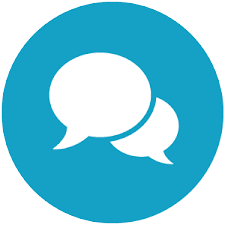Nonwoven fabric in wet wipes is gaining growing interest among manufacturers of wet wipes. This is because this cloth is becoming increasingly popular and has exceptional production advantages. This article provides comprehensive information about the nonwovens used in wet wipes.
Learn more: The leading & trusted wet tissue manufacturer in the market
1. What is nonwoven fabric?
Nonwoven fabric is a fabric-like material composed of staple fiber (short) and continuous long fiber (continuous long), which is bound together using chemical, mechanical, heat, or solvent treatment. The phrase is used in the textile manufacturing business to describe non-woven or non-knitted materials, such as felt.
Depending on the application, nonwovens can be:
| Abrasion resistant
Absorbent Antistatic Biodegradable Breathable Colour fast Conductive Crease resistant Cushioning Drapeable |
Dry cleanable
Durable Dust free Dyeable Elastic Flame resistant Foldable Glueable Heat sealable |
Impermeable
Ironable Light Lint free Liquid repellent Long-lasting Mouldable Non-conductive Non-fading |
Permeable
Porous Printable Protective (micro bacterial barrier) Repellent Resilient Rot and mildew resistant Sewable Skin compatible Smooth Soft |
Stable
Sterilisable Stiff Stretchable Strong Tear resistant Washable Weatherproof Weldable |
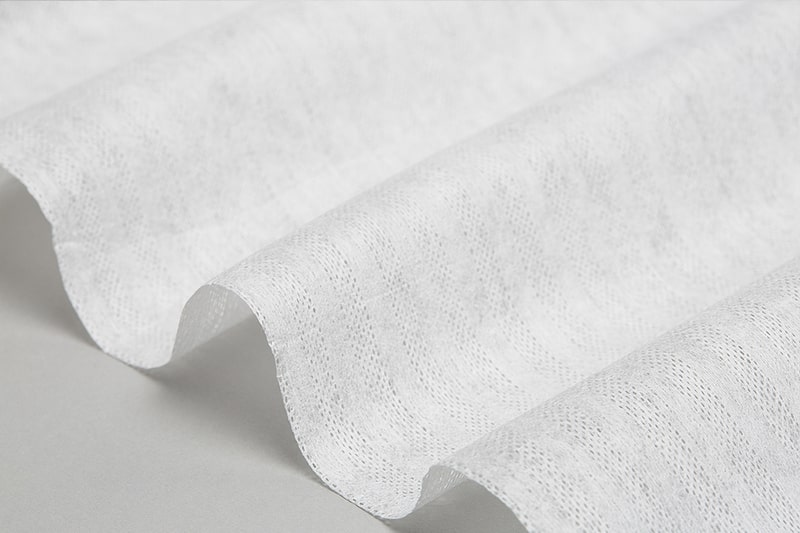
Nonwovens may be single-use, limited-life fabrics or very durable fabrics. Nonwoven materials offer functionalities such as absorbency, liquid repellency, elasticity, stretchability, softness, strength, flame resistance, washability, cushioning, filtration, bacterial barriers, and sterility. Oftentimes, these qualities are combined to make textiles appropriate for certain purposes while maintaining a reasonable balance between product durability and cost. They may imitate the look, feel, and strength of woven fabrics, and they can be as bulky as the densest paddings.
Read more: 3 main wet wipes ingredients & Things you need to watch out
2. Types of nonwoven fabric
Depending on the production technique, a vast array of nonwoven textiles may be generated. Several varieties of nonwoven textiles are mentioned in the following table:
|
Types of nonwoven fabric |
Production process |
Applications |
| Spun-Bonded Non Woven Fabric | The manufacturing process of Spun-bonded nonwoven fabric uses polymers as input materials and a continuous production process with high efficiency and low cost. |
|
| Spunlace non woven fabric for wet wipes | Silk, polyester, nylon, bamboo fibers, wood pulp, and viscose fibers are frequently used to create Spunlace. Multiple layers of yarn are wound and bonded using a high-pressure water jet to strengthen the thread. This method helps to create a fabric that is softer but less durable than other fibers. | Spunlace is widely used in the manufacture of products that come into direct contact with the human body due to its safety and friendliness.
|
| Heat Bonded Non Woven Fabric | The heating technique is the major binding method for this nonwoven fabric. Under the impact of high temperature, the adhesive interwoven in the fabric fibers will melt and form a single non-woven fabric texture with high strength. | Efficient-filter (single-effect) or deodorizing (double-effect) automotive air conditioning filters.
Filters for domestic air purifiers and building air conditioners, clean rooms, and vehicle filter systems. |
| Melt-blown Non Woven Fabric | The process of creating melt-blown nonwoven fabric also uses polymers as input materials, but it is more complicated. The molten polymers are extruded through a mold with hundreds of micro-holes to determine the size and heated by the hot air on a collection screen to form the final nonwoven fabric. | Production of masks (N95, BFE95, BFE99…) and gas masks, high-quality medical masks. |
| Wet Non Woven Fabric | The fibers’ raw materials are put in an aqueous medium. It facilitates the unwinding of the fibers into single fiber strands. To make a slurry, several forms of fibrous raw material are added to the suspended fibrous mass. This slurry-like substance is processed to create the nonwoven fabric. |
|
| Stitch-Bonded Non Woven Fabric | A stitch-bond nonwoven fabric is produced longitudinally on a weaving machine that uses strands to connect or secure the web. The outstanding advantage of this method is that the fabric has a soft texture like the original web because no chemical or thermal bonding is used. |
|
| Hydrophilic Nonwoven Fabric | Fabrics that are hydrophilic are utilized for products that are designed to absorb liquids and moisture yet must preserve their original strength and shape. |
|
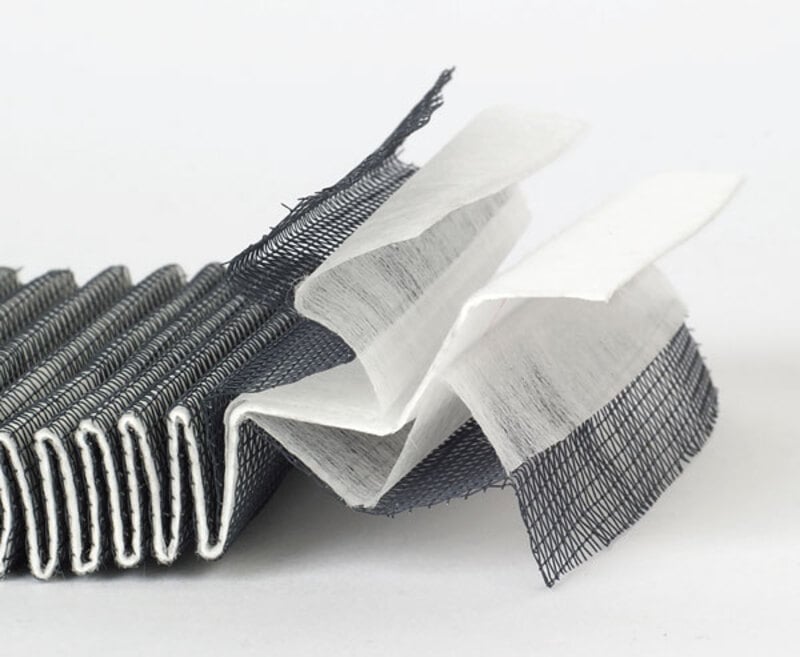
3. Fibrous materials of nonwoven wet wipes
Nonwoven fabrics can be manufactured from any type of fiber. Natural fibers (cotton, jute, flax, wool), synthetic fibers (polyester (PES), polypropylene (PP), polyamide, rayon), and special fibers (glass, carbon, nanofibers, bicomponent, superabsorbent fibers, etc.) are among the most regularly used fibers. This knowledge will help you comprehend these fibers.
1- Natural fibers
Natural fibers are preferred for a variety of reasons, including their eco-friendliness and resilience. Here are some common types of natural fibers:
| Characteristics | Advantages | Disadvantages | |
| Cotton | Cotton is made up mostly of cellulose, an insoluble organic component essential to plant structure, and is a soft and fluffy substance. |
|
|
| Line | Linen is naturally hypoallergenic and highly breathable. |
|
|
| Jute | Jute is a coarse, natural plant fiber extracted from the jute plant that is used to weave garments such as burlap. |
|
|
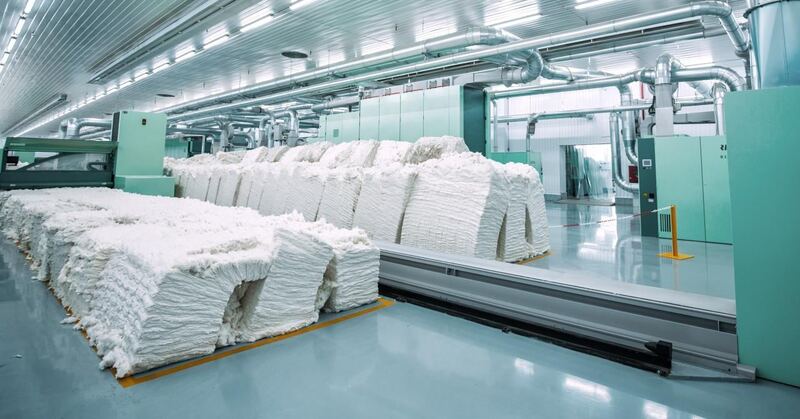
| Conclusion: For natural fibers used to produce nonwovens for wet wipes, cotton is probably the most suitable. Although all three types of natural fibers above have the advantages of being safe, skin-friendly, Jute and Linen have disadvantages that are not suitable for non-woven fabrics in wet paper. If linen is easy to wrinkle and the fabric color is dark, Jute is easily softened in a high-humidity environment. Therefore, with the advantages of durability, good absorption, and stretchability, cotton is still the preferred fiber in the production of wet wipes non-woven fabrics. One note is that cotton is quite expensive, so non-woven cotton fabrics are usually more expensive. |
2 – Regenerated fiber
To produce regenerated fibers a chemical is added to remove the cellulose fibers from the plant-based cellulose fibers, such as wood pulp. The classification of the fiber is based on the chemical solvent system employed to extract the fiber; therefore, regenerated fibers contain both natural and synthetic components. Here are some popular types of regenerated fiber:
| Characteristics | Advantages | Disadvantages | |
| Viscous fiber/Tencel | Viscose is a semi-synthetic Viscose fabric made from wood pulp, used as an alternative to silk. This material has a coating and creates a smoothness similar to high-end, luxurious materials. It is a versatile fabric that is used for many different purposes from clothing to cords. |
Because of its low permeability, it is hypoallergenic.
|
|
| Bamboo fiber | Bamboo fiber is a cellulosic fiber regenerated from bamboo. The production of starchy pulp from bamboo stems and leaves involves alkaline hydrolysis and multi-phase bleaching. |
|
|
| Modal fiber | Modal is a semi-synthetic fabric made from oak pulp, often mixed with other fibers such as cotton and spandex for added strength. This fabric is considered high-grade textile because of its softness and higher cost than cotton or viscose. |
|
|
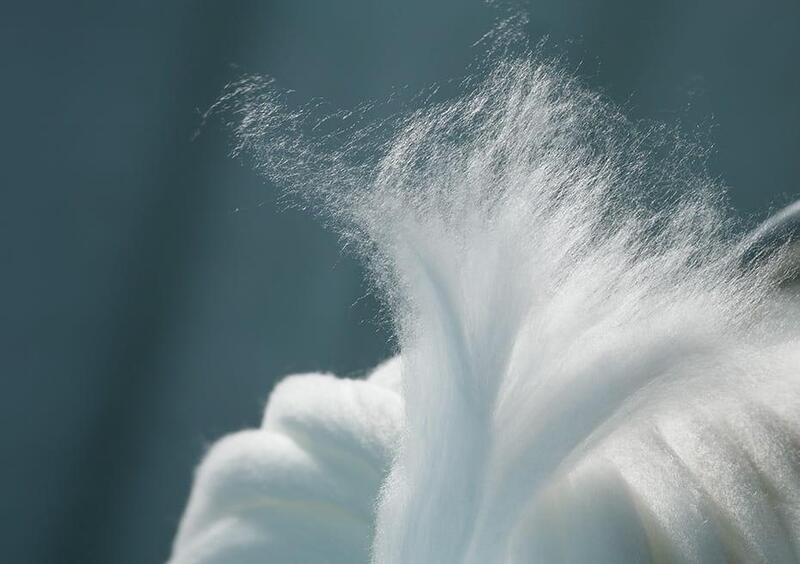
| Conclusion: Of the above types, Viscous is the most widely used fiber because of its reasonable price, good durability and non-irritating to the skin. This fabric is often used in wet facial tissues. |
3 – Synthetic polymer
In the nonwovens sector, synthetic fibers (man-made fibers) are the most common. Compared with natural fibers, man-made fibers have fewer impurities, low production costs, and higher stability.
There are many synthetic polymers used in the production of nonwovens such as PP, PE, PET, NYLON, PA, polyester, PCL, PLA, etc. The table below will provide information about the two most popular fibers, Polyester and Polypropylene.
| Characteristics | Advantages | Disadvantages | |
| Polyester | This type of fiber is composed of esters, which are compounds composed of acids and alcohol. When any of these fundamental molecules are joined, polyesters are formed. | The physical properties of polyester fibers are important in the production of nonwovens:
|
|
| Polypropylene | Polypropylene is a polymer derived from the monomer propylene. Polypropylene is considered the “steel” of plastics due to its versatility and adaptability to a wide range of uses. |
|
|

| Conclusion: It can be shown that synthetic fibers frequently have the benefits of durability, resistance to bacteria and microbes, and inexpensive production costs. However, the surface of these fibers is frequently rigid and they lack breathability. Therefore, in order to manufacture a nonwoven fabric from wet paper, it is important to blend these fibers with natural or regenerated fibers in order to achieve the optimal texture. |
4. Applications of non woven fabric
Non-woven fabrics are widely applied in many areas of life, the closest of which can be seen in the medical, personal care wipes, agricultural and household products presented in table below:
| Fields | Applications | Technologies Employed |
| Medical | Disposable caps, gowns, masks, scrub suits and shoe covers, drapes, packs, sponges, dressings and wipes, bed linen, contamination control gowns, examination gowns, lab coats, isolation gowns, transdermal drug delivery, shrouds, underpads, etc. | Dry-laid, spunlace, meltblown, spunbond |
| Personal care wipes | Baby wipes, facial wipes, cleansing wipes, hand and body wipes, moist towelettes, personal hygiene wipes, feminine hygiene wipes, antibacterial wipes,, and medicated wipes are all examples of wet wipes. | Air-laid, spunlace, wet-laid |
| Agriculture and horticulture | Crop covers, plant protection Seed blankets, weed control fabrics, greenhouse shading, root control bags, biodegradable plant pots, capillary matting, landscape fabric | Needle punched, spunbond |
| Household | Abrasives, bed linen, blinds/curtains, carpet/carpet backings, covering and separation material, detergent pouches/fabric softener sheets | Needle punched, spunbond, wet-laid |
Besides the applications listed in the table, nonwoven fabrics are also used in engineering manufacturing, construction, automobile manufacturing, etc.
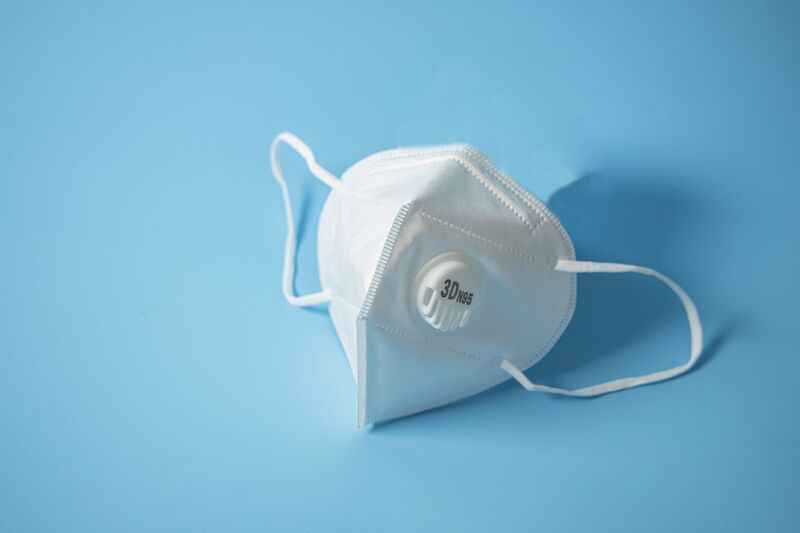

| OEM wet wipes | ODM wet wipes |
4. How to choose fiber types of nonwoven fabric for wet wipes?
There are many ways to choose non-woven fabrics in wet paper production. One of the most common ways is to classify based on the intended use of the wet paper. It can be divided into 2 main uses: used for the surface of objects and used for the surface of the skin.
1 – Products used for surface cleaning purposes
- Non-woven fabrics: Prioritize non-woven textiles, such as Heat-Bonded Non-Woven Fabric and Spun-Bonded Non-Woven Fabric, due to their durability and tenacity. The production procedure is likewise reasonably straightforward, and production costs are low.
- Fibrous materials: Wipes manufacturer should choose non-woven fabric with synthetic polymer or synthetic polymer with a high ratio in order to assure the fabric’s durability, bacterial resistance, and affordable price.
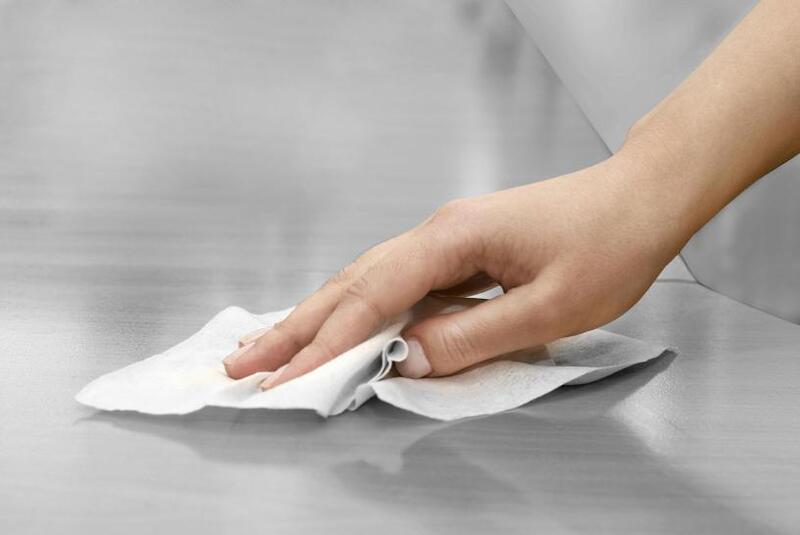
2 – Products used for skin surface (face, hands, baby skin)
- Non-woven fabrics: Prioritize two types of non-woven fabrics extensively used in the medical and personal care areas, namely Spunlace non-woven fabric and Hydrophilic Nonwoven, due to their skin-friendly composition and risk-free manufacturing procedure.
- Fibrous materials: Manufacturers should choose natural and regenerated fibers to assure the softness of fabrics on the skin, hence reducing the risk of irritation and allergic reactions. A small amount of synthetic polymer can be blended with the cloth to make it more durable and resistant to bacteria and mold.
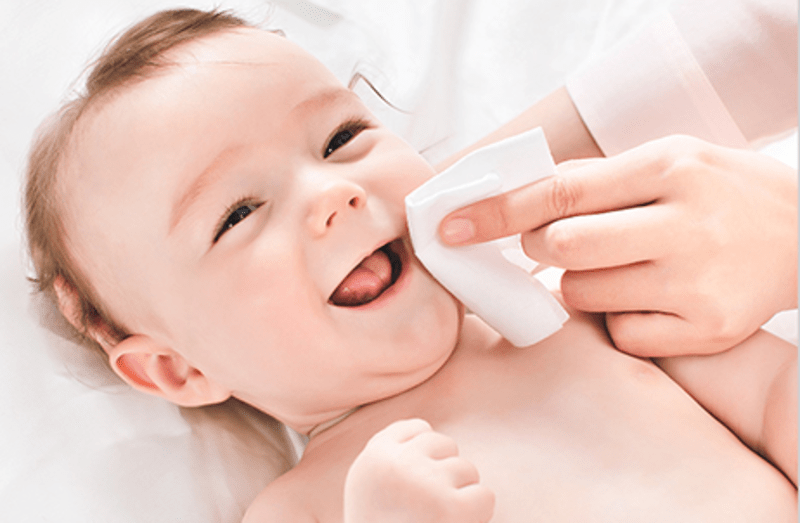
Relevant posts about wet wipes and wet wipes production:
- What is the ISO 9001:2015 standard? Benefits & 7 Principles [updated]
- What is the Allergy UK seal of approval? All you need to know
Hopefully, the preceding section has provided sufficient information about the nonwoven fabric in wet wipes. Please mention the intended use in order to select the optimal fabric for your wet wipes.




